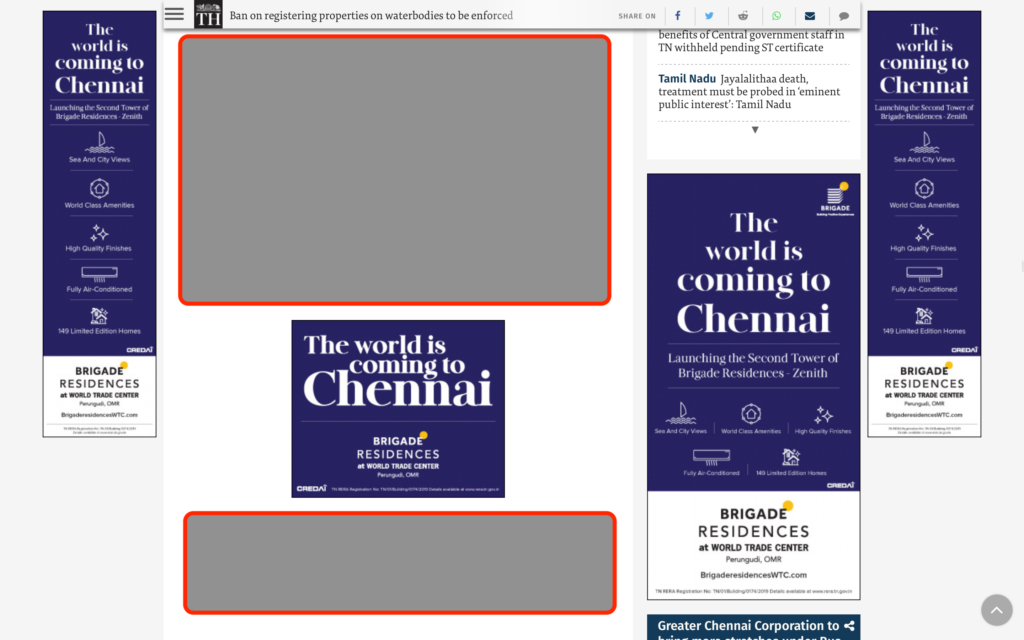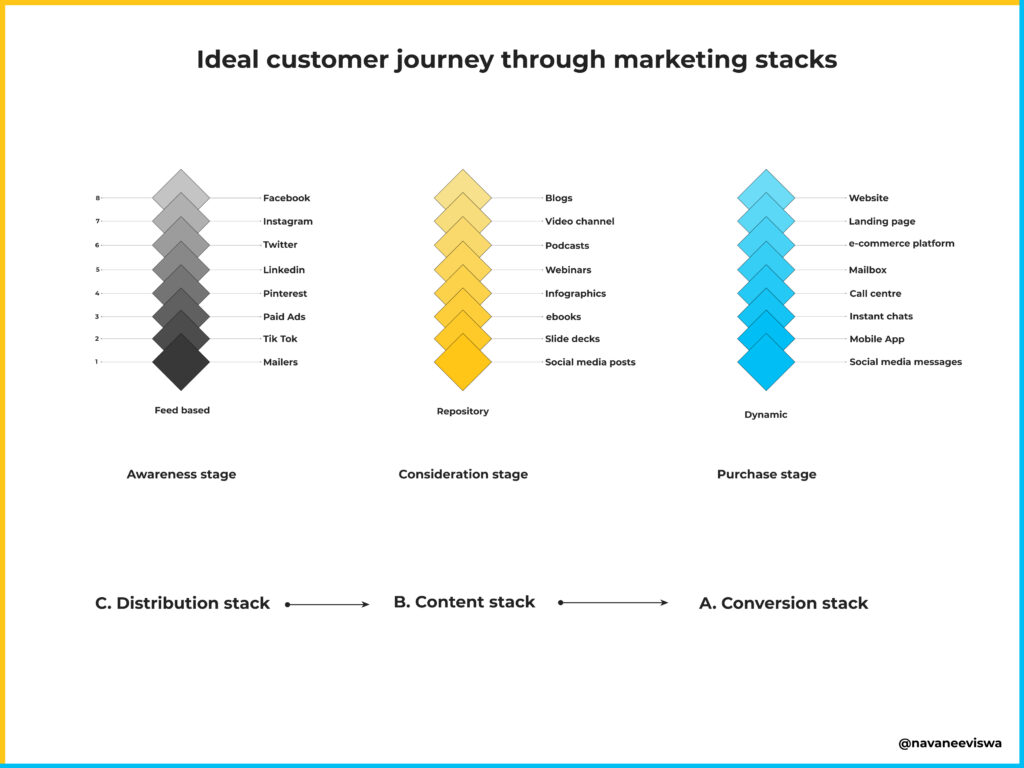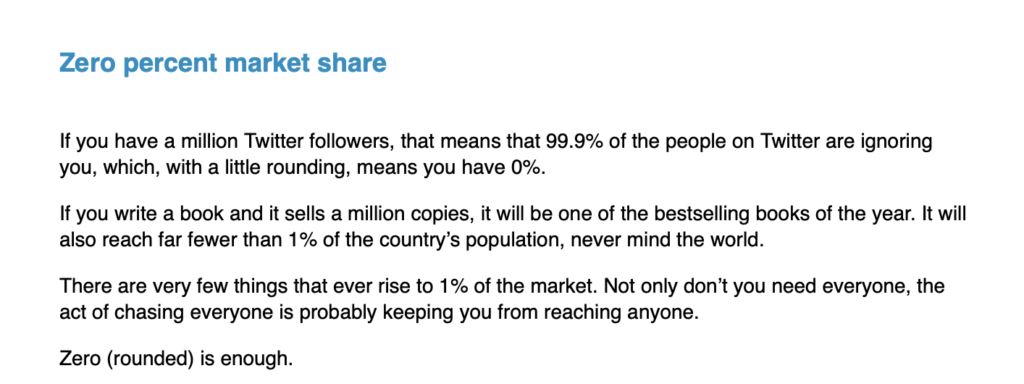In Digital Marketing, do you create a webpage with ads displayed to your precise target audience, and assume that is he/she is gonna convert as your customer?

People come to a web page because they want to consume that specific piece of content. The motivations and reasons could be many. But definitely, they have not come to that web page expecting to see your ad, almost blocking the content they want to read. See, how intrusive and non-sensical your ads are?
At this point you should ideally have sensed, there is some bigger and fundamental problem to the approach of digital marketing (case in point: Real Estate industry in India).
The idea behind such a type of ad is, someone sees this ad and they are going to click it, and likely enquire about the project.
Like this,
Discovery —-> Sales
Is your product a transactional one? Like a simple digital product or an FMCG product? NO. Then why do you think this would work?
[Please remember, FMCG and D2C brands have started creating content in the form of videos and maintaining their brand video channel on YouTube actively. This helps their other performance campaigns. In the connected world, your audience matters. We’ll talk about this in another post]
The point is transactional businesses have started creating content, ie., transactional businesses are not any more transactional business. They need to build their brand as quickly as possible in the long run.
Let’s see a little wider – areas that may have contributed to this disaster
A. Tremendous pressure to bring in ads performance.
Performance of ads is about doing all the foundational things right and only then going for it. It works only when you do all the steps right. It’s a step-by-step process of building your marketing stacks. It is a strategic and long-term process.
Directly jumping on performance ads is a clear haphazard approach, that does more harm than any good to your brand. Performance ads are the last thing to do after you execute all the foundational elements in digital marketing.
B. Agencies that execute such volume of ads
I have no comments on them as they do what you ask for. You look for someone who does what you demand, not someone who shares their voice and suggests the right approach. The more ads you demand, the more the fees the agencies get.
C. The platforms(Google) don’t have any cap to display ads on a particular webpage.
Something like an ad display area concerning the content displayed? Why should they do it? It is simply detrimental to their revenue. So they help you to put more and more ads by making the process super simple. Over and above they provide you with a dashboard and make you believe it solves your marketing problems, surely it doesn’t.
Platforms will lure by showing something great if you follow them, it is up to you to think from your brand perspective and take an educational approach towards marketing.
D. Is it because the meagre ~4% CTR makes you continue what you do?
Please remember, it is CTR, not conversion. CTR can happen out for so many reasons – random exploring, curious about the ad, momentary time availability, etc., from the audience side.
Let’s say you get about 0.1% or 0.2 % of conversion from such ad activity. Is this number that makes you put more and more ads? So, you can continue cultivating that 0.1 or 0.2%?
Reality
The world is paying to consume good content,
- Substack has 500000 + (five hundred thousand) customers.
- Substack has 5% – 10% paying customers. You may make your calculations about the total readers.
- Anybody can publish content on substack, the moment you make it as pay and read model, substack gets a small commission.
From a brand perspective, all of these above stats least matters but these could be the important takeaway,
“Non-ad based media models are on the rise”
“Quality content is welcomed, consumed and will be shared in their peer groups”
Substack numbers source: Brian Dean
There is Medium, news magazines, Journalism houses, educational institutes that have already adopted paid subscription models that cater content without ads.
Hey Navan, they all are creators, they can create content – How can a brand create content and that too from the real estate industry?
That’s a good question, a right question.
One thing we can all agree upon, content creation is not easy, if it was easy any business can do it. To me, that should be seen as an opportunity.
“Any brand from any industry can create content”
There are many approaches to creating content and are a lot of examples from a wide range of industries.
A. A tyre manufacturer’s approach to marketing.
B. A tractor manufacturer’s approach to content marketing.
C. A cement manufacturer’s approach to online ads. A correct approach indeed.
D. A fitness brand that has a brand video channel.
E. An FMCG brand that has built their brand channel
One thing common here is that all of them are D2C. It is a great opportunity to establish communication and engage with your customers directly. This is precisely where content plays an important role.
“Brand content will play a crucial role in your marketing success”
On the other hand, what if assigning an agency to create 100% of your content on behalf of your brand?
This may be a long shot as it may miss out on the brand’s voice. There are frameworks to mitigate this to a great extent. This may be a viable solution for creating your brand content.
The point is, you can create your brand content or create it in close association with agencies.
What I don’t understand is those who ignore content on the whole.
Content creation is not a magic wand that solves instantly all your performance problems. But a definite wand that steadily fixes your performance problems.
In a parallel world,
Kevin Kelly wrote in 2008 about 1000 true fans for creators,
“To be a successful creator you don’t need millions. You don’t need millions of dollars or millions of customers, millions of clients or millions of fans. To make a living as a craftsperson, photographer, musician, designer, author, animator, app maker, entrepreneur, or inventor you need only thousands of true fans.”
In 2020, Li Jin – an angel investor at a16z rewrote it to 100 true fans but stuck with creators and kept the revenue the same as that of 1000 true fans.
How I see is,
Every brand should see itself as a big creator(their agency, internal team, their top brass all put together) and start with a goal of earning the first 100 true fans albeit not having any intention to make their fans pay for their content but in the process of making them as their brand ambassadors.
When you start rolling out content, you start getting fans. You roll out more quality content, they slowly become your true fans looking forward to your content at the frequency you set.
You repeat the process and they become your brand ambassadors or they become your customer. Both are ideal goals for a brand. In the connected world, your customer is supposed to be your brand ambassador regardless of how they become your customer.
It is to increase your true fans that is an ideal objective for good content marketing. And that essentially works in favour of your other campaigns in the long run. This is where your 100 true fans come into place. The goal doesn’t end with 100 true fans, it scales up further based on the size of your business and the growth numbers you have planned to achieve from 100 to 1000 – 10K to 10 million
Because earning true fans is not easy for many brands but is very much possible through quality content.
See this gem from Seth Godin,
Let’s continue breaking down the idea behind the above such ads,
As we saw above, it was about taking your audience from
Discovery → Sales
Your customer travels in a different journey than what you expect them to or impose them to follow. Your customer (to be) have many options now, to be honest – they have more control in what they can do. You have the option to help them make better purchase decisions by helping them through your content. Whether you like it or not, they have control in this journey.
They travel from
Discovery → Awareness → Consideration → Sales
Even when we simplify, the process goes through this framework,

Your customer can enter anywhere at the awareness stack and may exit anywhere afterwards.
The brand must fulfil the gap (Awareness+Consideration) stages through the content that are worthwhile for them. I’ve written a separate post on the types of content to be Effective or Efficiency.
Expecting your customer to jump 2 stages from Discovery to Sales is expecting a 20 metres jump from your customer and detrimental to the organisation.
You can run campaigns to address the discovery part and guide them to create awareness and make them consider you through your content and finally land the sales stage.
Start building your content repository, by building a blog site or your brand video channel. So that all your performance campaigns work for you, not today, tomorrow it will.
